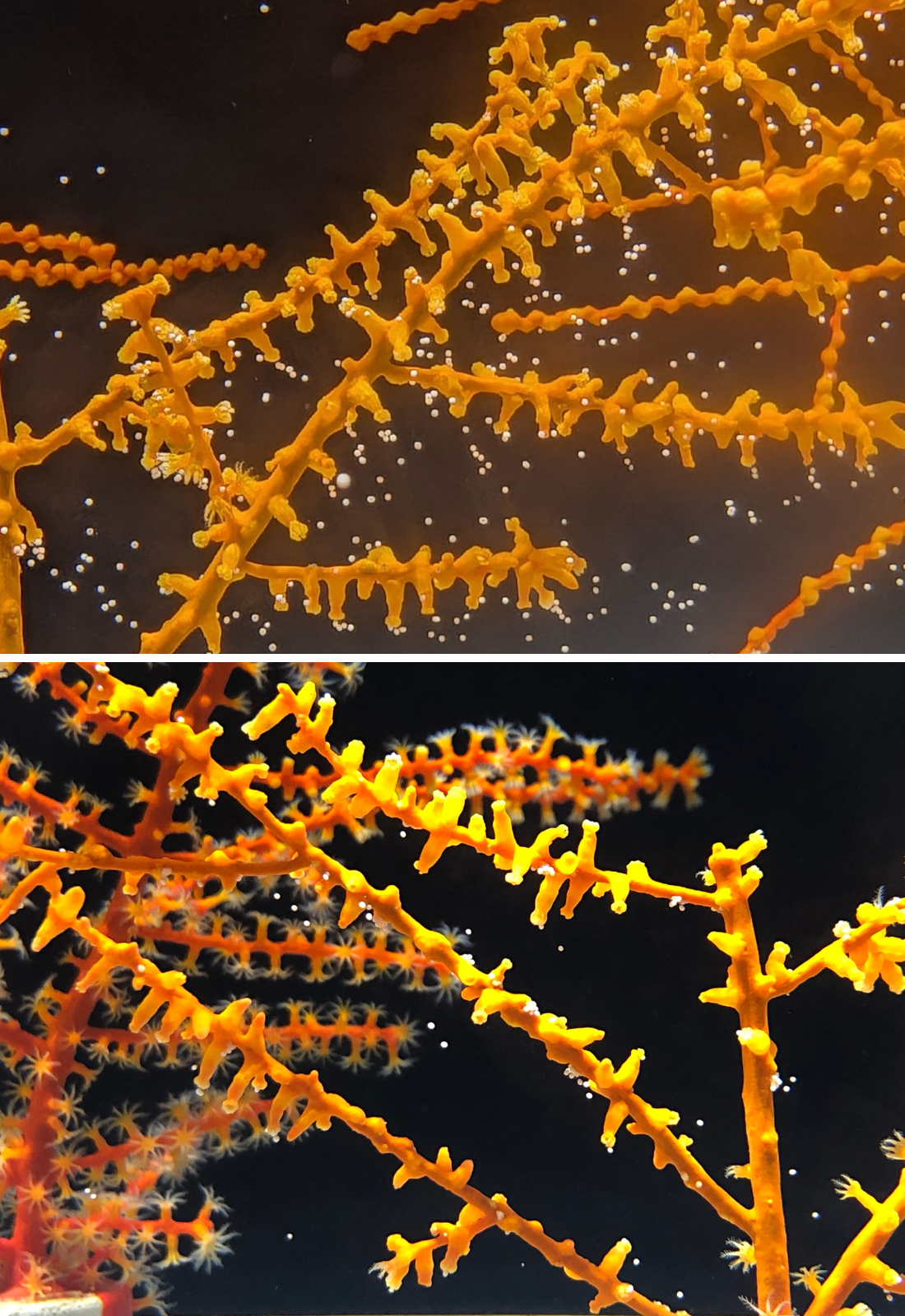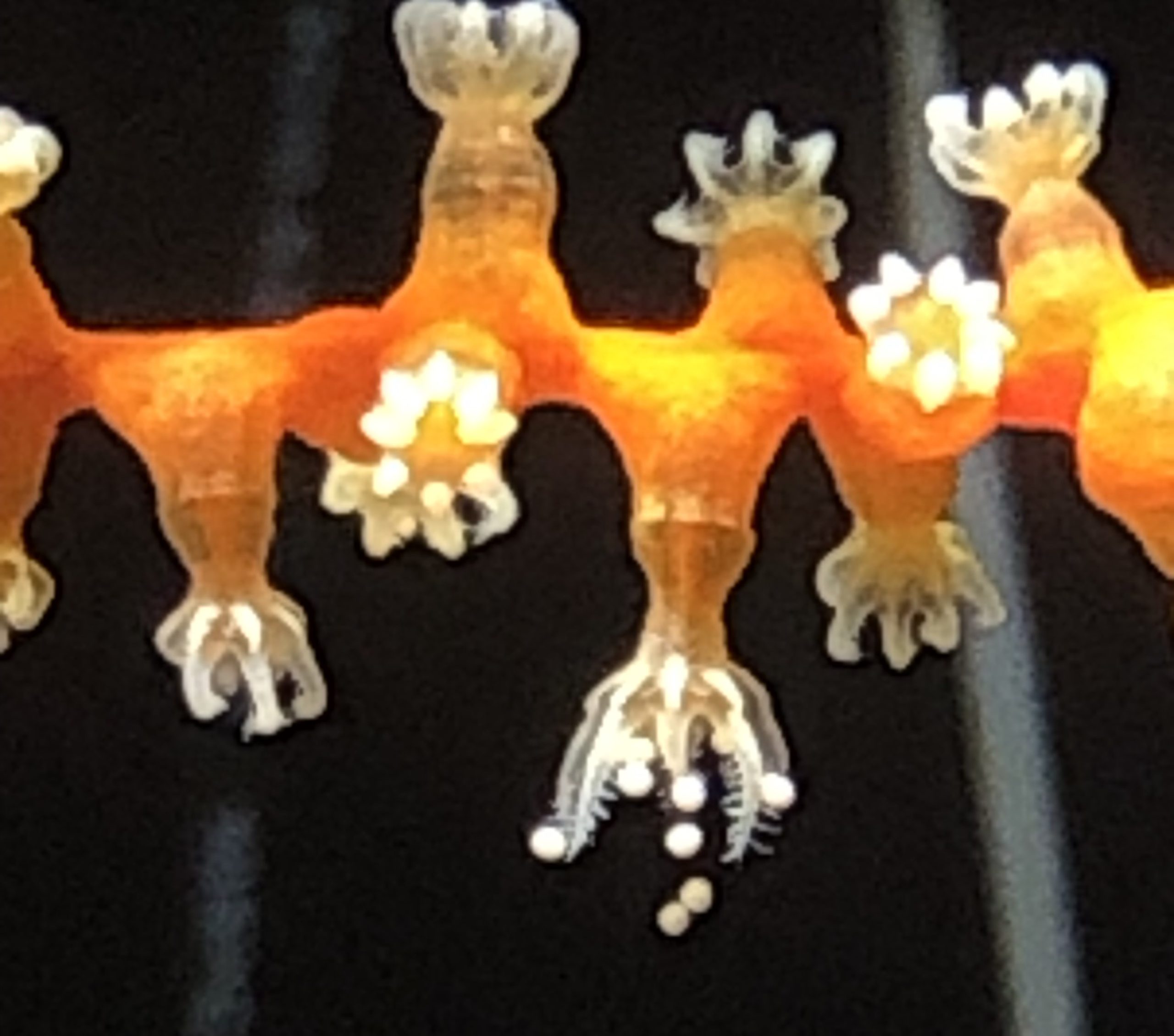
For the first time, scientists documented the captive spawning of a species of mesophotic octocoral — a breakthrough that could further restoration efforts for deep coral habitats.
In an article published this month in the journal Marine Biology, USGS and NOAA scientists report on the simultaneous spawning activity of Swiftia exserta. S. exserta is an important habitat-building species in the mesophotic, or “middle light” zone, and one of the coral species impacted by the 2010 Deepwater Horizon (DWH) oil spill in the Gulf of America (formerly the Gulf of Mexico). Understanding the reproductive biology of S. exserta and other deep corals is critical to implementing effective restoration strategies.
The team collected S. exserta fragments using a remotely operated vehicle during expeditions in the Gulf in 2021 and 2022, then cared for them in federal laboratories in South Carolina, Florida, and Texas. The corals spawned simultaneously in two of the labs, giving scientists an unprecedented opportunity to observe their reproductive habits, spawning behavior, and larval development.
The paper reports that S. exserta reproduction appears to follow a seasonal cycle, spawning between late September and early November. The study also found that colonies are either male or female, with a higher proportion of female colonies. Additionally, the larvae swim for a few days before settling on the bottom. The study also demonstrates the potential for captive breeding programs to serve as a tool for coral restoration through outplanting of lab-reared corals.
This study is a significant step forward in understanding the biology and ecology of S. exserta. It is also just the beginning–work is already underway to further study the environmental and chemical cues that may affect spawning in the lab. Future studies will continue to fill in the gaps in our knowledge of these little-before-studied mesophotic corals and inform efforts to restore them in the wild.
This work is part of the Coral Propagation Technique Development (CPT) project within the Mesophotic and Deep Benthic Communities (MDBC) portfolio, approved to help restore resources injured by the DWH oil spill. After the spill, federal and state agencies formed the Deepwater Horizon Natural Resource Damage Assessment Trustee Council to assess the impacts and implement actions to restore injured habitats, species, and the services they provide. In 2019, the Open Ocean Trustees selected four MDBC restoration projects, one of which was CPT.
This study includes authors from NOAA NCCOS, USGS Wetland and Aquatic Research Center, NOAA Southeast Fisheries Science Center, and NOAA Fisheries Office of Habitat Conservation. Read the publication here.
Citation: Johnstone, J.W., Jenkins, W.G., Jankiewicz, M., Quigley, J.M., Frometa, J., Salgado, E., Higgins, B., Demopoulos, A.W.J., Gardner, C.L., Etnoyer, P.J., and Benson, K.G. 2025. Spawning and larval development of the mesophotic octocoral Swiftia exserta in aquaria. Marine Biology 172, 41. https://doi.org/10.1007/s00227-024-04588-y

